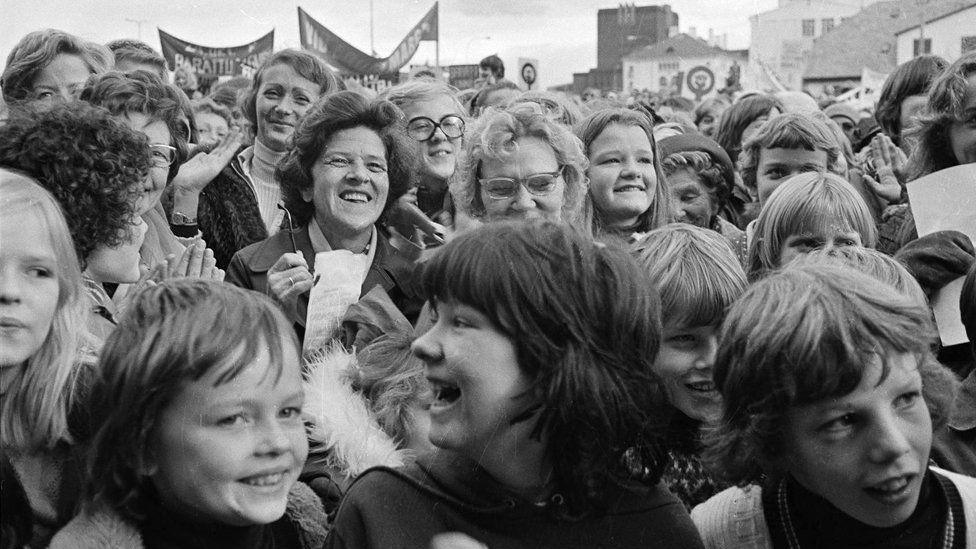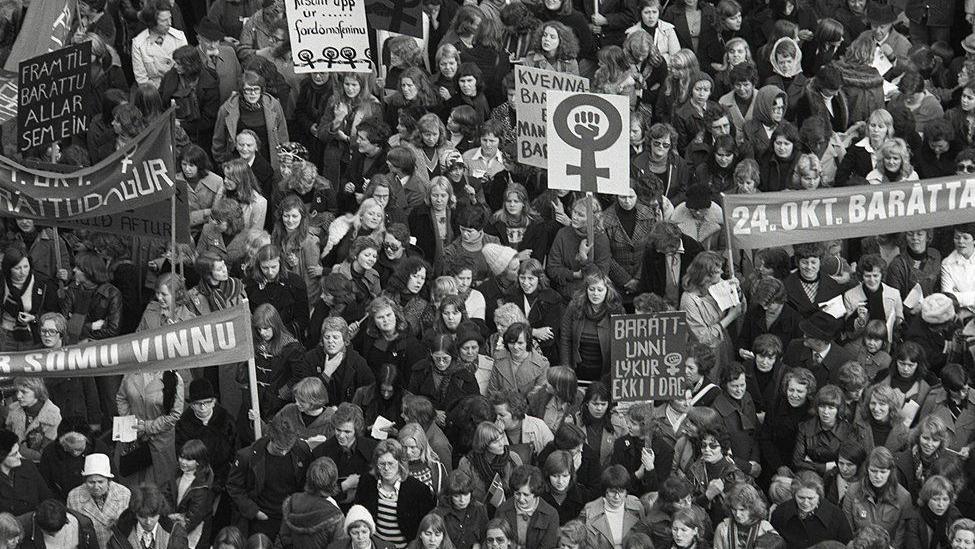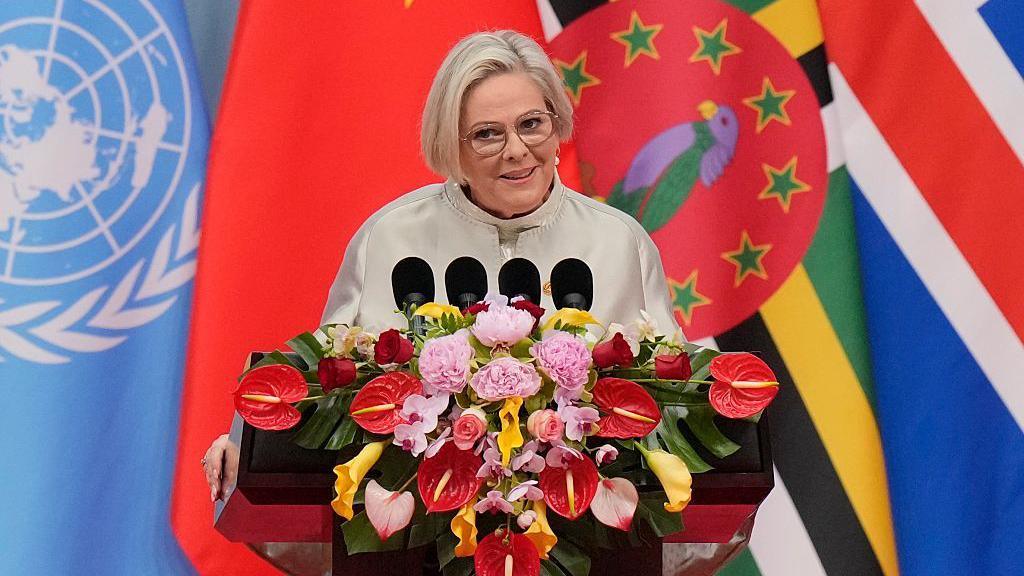Iceland marks 50 years since the first Women's Day off strike

- Published
Thousands of women in Iceland, including the president, will not be working today to mark 50 years since the first Women's Day Off in the country.
The strike on October 24 1975 called the "kvennafrí", or women's day off, was a protest at the gender pay gap in Iceland.
A gender pay gap is when there is a difference in the amount of money paid to men, compared to women.
Halla Tómasdóttir, who last year became Iceland's second female president, is amongst the women not working today - to mark the day historic day.
Read on to find out more about the strike - how it started and the impact it had.
What happened on 24 October 1975?

A strike is when a group of workers come together and agree to stop working.
Employees do this when they want to protest against something they think is unfair where they work.
In June 1975 a congress was held in Reykjavík, Iceland's capital, attended by around 200 women from all walks of life.
It was here a suggestion was put forward to urge women to take a day off on October, United Nations Day, to demonstrate the importance of their work.
On 24 October 1975, 90% of Iceland's women stopped work in protest at gender inequality and 25,000 women gathered in Reykjavík city centre.
At the time women were the main care givers which meant for the entire day the fathers suddenly had complete responsibility for their children.
For the men the day was given another name - The Long Friday - as they were forced to take their children to work and look after them.
What impact did the Iceland's women strike have?

Halla Tomasdottir is Iceland's second female president
Although people disagree about the impact that the Women's Day Off had, huge changes did follow.
The world's first female president Vigdís Finnbogadóttir was elected five years later.
All-women shortlists were introduced for the 1983 parliamentary election, and a new Party, the Women's Alliance, won its first seats.
Iceland is the only country to have closed the gender gap by more than 90%, according to the World Economic Forum, making it the lead in its Global Gender Gap Index.
Every leadership position in the country – including president, prime minister, bishop and police chief – is now held by a woman for the first time ever.
The women's strike was repeated in Iceland in 1985, 2005, 2010, 2016, 2018 and 2023.
This year is the third time a full day strike has taken place.
The Women's Day Off became a source of inspiration for other women's protests across the world.
